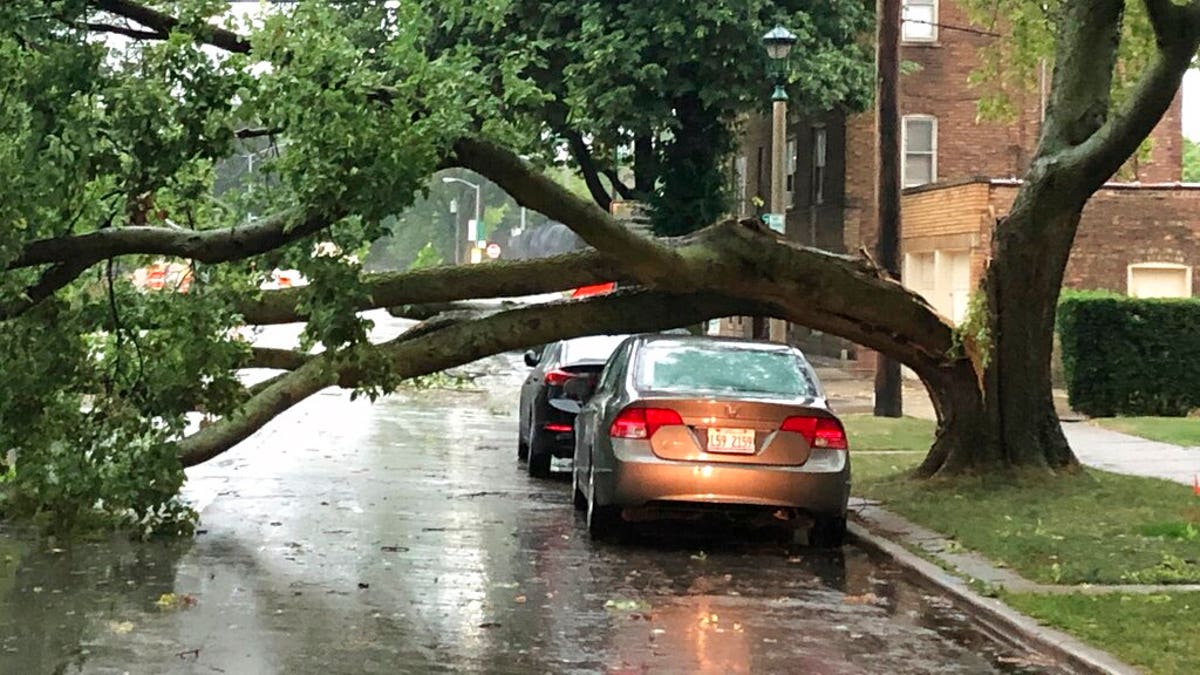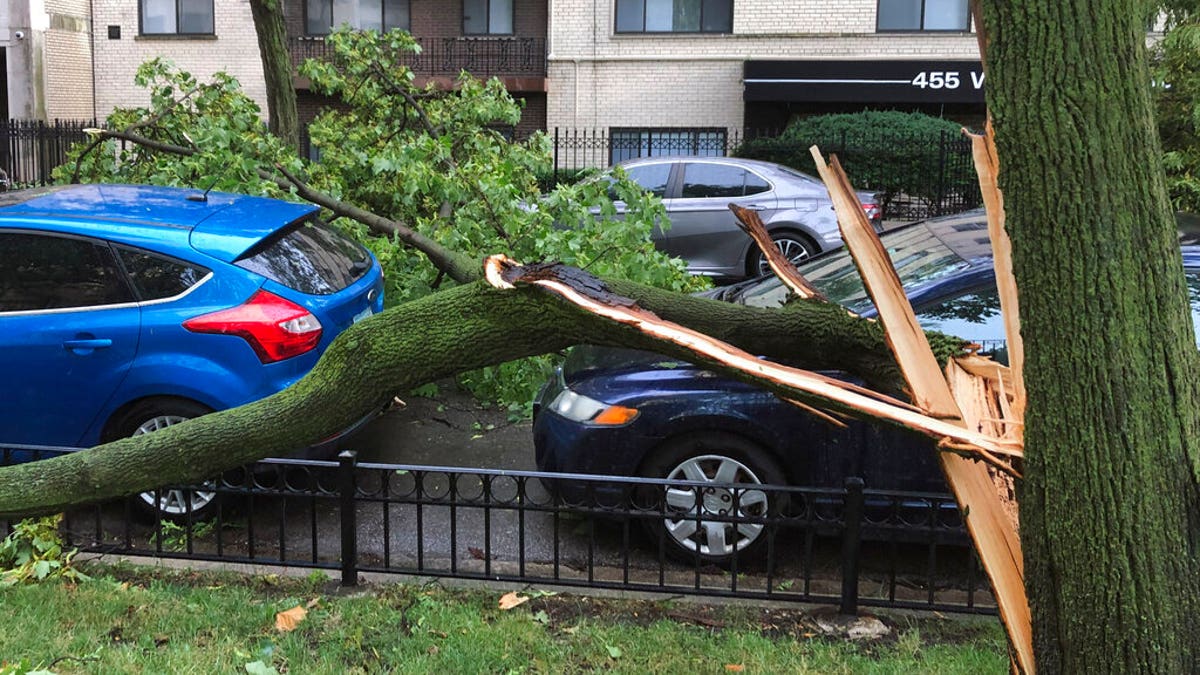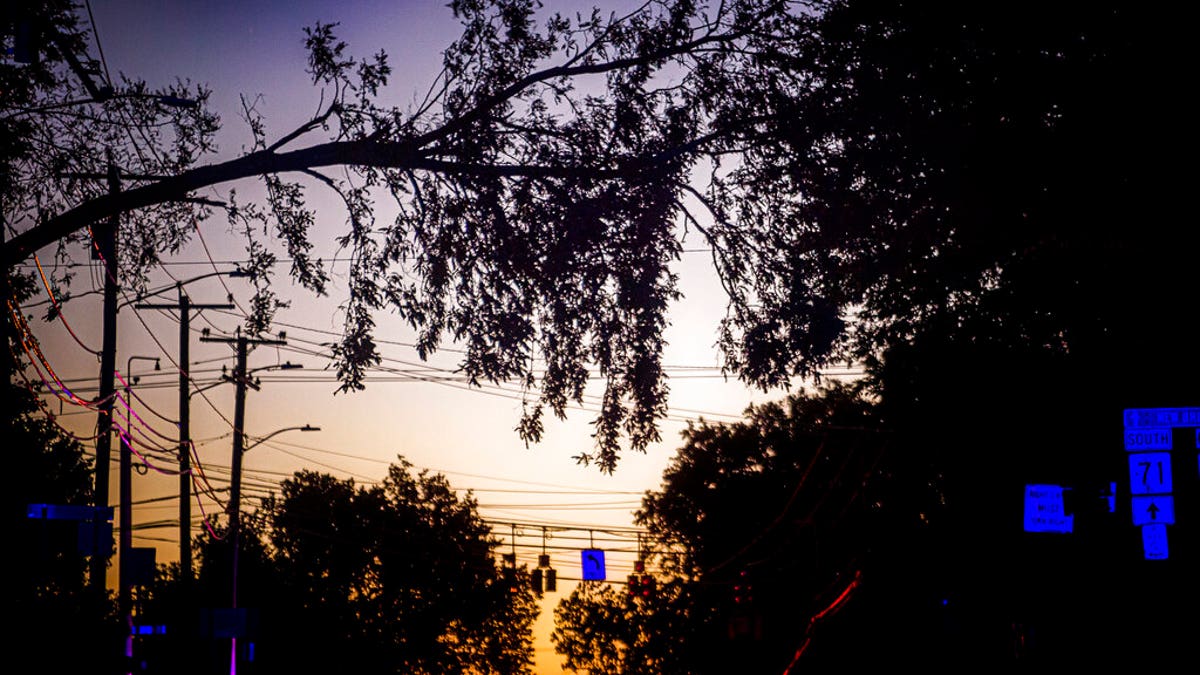Midwest hit with rare and powerful storm packing winds up to 100 mph
Bystanders record the damage from dangerous winds in Chicago and Iowa.
Hundreds of thousands of Midwesterners are dealing with power outages due to severe weather that ripped through the region Monday, and the coronavirus pandemic may be slowing down repairs.
Initial reports had more than 1 million people in the dark after winds of up to 100 miles per hour ripped through -- tearing shingles off a rooftop in Chicago, toppling a grain elevator in central Iowa and damaging a wide swath of the region.
Iowa Gov. Kim Reynolds issued disaster proclamations for at least 20 counties across the state Tuesday and said more declarations could still come. There were more than 350,000 customers still without power in the state Tuesday evening, according to PowerOutage.us, which tracks blackouts nationwide. Illinois had more than 360,000 outages. Indiana had almost 40,000.

Part of a tree that had split at the trunk lies on a road in Oak Park, Ill., while also appearing not to have landed on a car parked on the road, after a severe storm moved through the Chicago area Aug. 10. (AP Photo/Dave Zelio)
It happened almost a week after Tropical Storm Isaias tore its way up the East Coast, knocking out power to more than 2 million households, a number of which still don’t have electricity.
The damage showed how the coronavirus can slow the disaster response as crews take extra precautions to safely repair power lines. Utility companies around the country have implemented social distancing, time-consuming new sanitization measures, and other precautions to help reduce the risk that crews and members of the public may catch the virus.

A downed tree limb blocks a roadway in Chicago's Lakeview neighborhood on Aug. 10. A rare storm packing 100 mph winds and with power similar to an inland hurricane swept across the Midwest on Monday, blowing over trees, flipping vehicles, causing widespread property damage, and leaving hundreds of thousands without power as it moved through Chicago and into Indiana and Michigan. (AP Photo/Tom Berman)
The governors of New York and Connecticut announced investigations into utility companies and how they handled the storm response. The damage left roads blocked, and railways littered with downed trees and other debris. Limbs fell on automobiles, houses and other structures. Boats sank in marinas.
And quick solutions like charging a smartphone at the local Starbucks or staying with friends or relatives until power is restored are not as available due to COVID-19.
A spokeswoman for PSEG LI, which serves New York’s Long Island, east of New York City, said the utility company was working hard to restore power to its customers, but also had to adhere to new health and safety procedures it implemented due to the coronavirus.
CLICK HERE TO GET THE FOX NEWS APP
“We know that being without electricity creates hardships and is frustrating during ordinary times,” she said. “Given the COVID-19 pandemic, crews must follow additional safety protocols that may slow down restoration processes. We ask for and greatly appreciate our customers’ patience and understanding and urge them to prepare for the possibility of extended power outages.”
PHOTOS: TROPICAL STORM ISAIAS DAMAGE
Mitch Gross, a spokesman for Eversource in Connecticut, said the utility’s workers have used enhanced sanitation procedures and follow other coronavirus-related health guidelines since March.
“It may slow down a little bit while they need to clean the truck or properly social distance or things like that,” he said. “But the push is on to get the remaining customers back on as quickly and safely [as possible.]”
And crews coming in to help out from other states also are following the company’s coronavirus precautions, Gross said.
However, according to officials from multiple utilities, emergency response workers are at least exempt from the 14-day quarantine restrictions New York and Connecticut have imposed on visitors from a slew of COVID-stricken states.
By Tuesday morning, PowerOutage.us reported that most of the customers in New York, New Jersey and Connecticut had their lights restored -- only about 30,000 were still in the dark.

A tree is blown over by the winds of Tropical Storm Isaias rests across power lines on Aug. 4, in West Hartford, Conn. Many homes lost power due to the storm. (Mark Mirko/Hartford Courant via AP)
NASA CAPTURES STORM ISAIAS IN 'A SLICE' TAKEN BY SATELLITE
While utility crews are out wearing protective masks and following other COVID-related health guidelines, Gross, the Eversource spokesman, also urged residents to take the recommended precautions when approaching workers.
“Please, they need to practice social distancing as well for their own safety and the safety of the line and tree crews,” he said.



